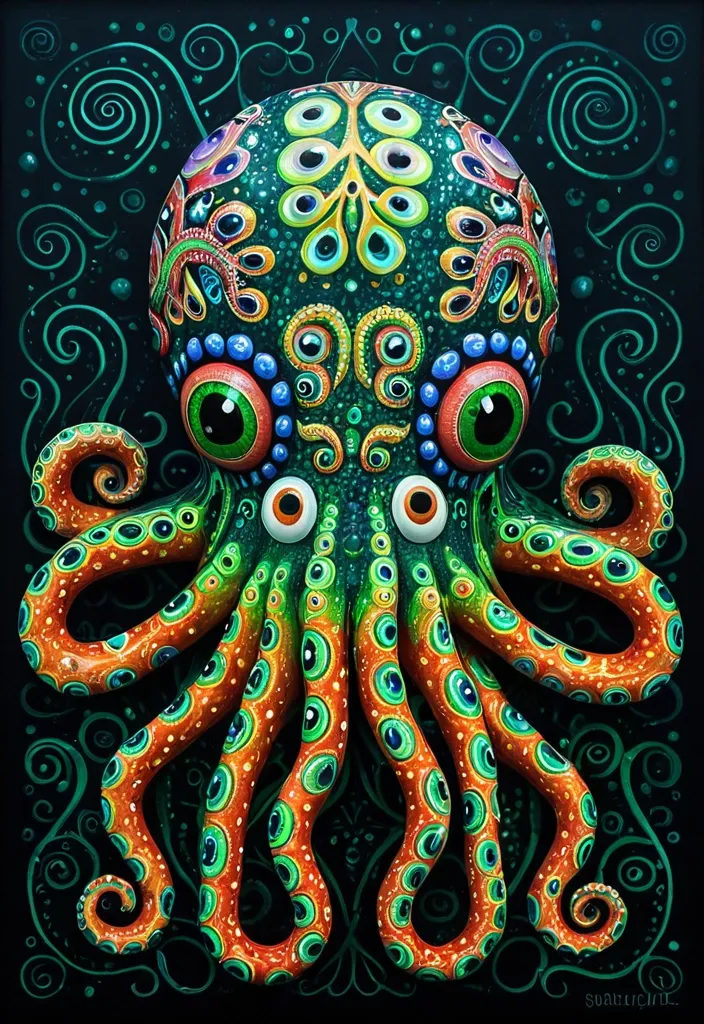Search Results for Roma
Explore AI generated designs, images, art and prompts by top community artists and designers.

Artstation , Drawing , Graphite , Charcoal Art , "Illustration: A dreamlike scene bathed in soft , ethereal moonlight , representing a cherished memory at their secret , secluded lake. A woman , a mature and captivating presence with dark skin , long , flowing dark dreadlocks ('um rio de ébano a deslizar' - a river of ebony sliding down) , and striking eyes with reddish irises (similar to that of a vampire) , is dancing gracefully at the edge of the lake. She is wearing a delicate , flowing dress that resembles a blooming flower ('Seu vestido , a pétala de uma flor a desabrochar' - Her dress , the petal of a flower blooming). Her movements are fluid and expressive , conveying a sense of joy and freedom. Seated on the bank of the lake , a man of imposing presence with dark skin , dreadlocks , and striking eyes with a wolf-like coloration watches her with a loving and protective gaze. The lake is surrounded by lush vegetation and ancient trees , creating a sense of timeless beauty and seclusion. The overall mood is one of longing , nostalgia , and idealized beauty , representing their private sanctuary. The style is romantic and ethereal , reminiscent of a Pre-Raphaelite painting or a dream sequence in a classic film. The color palette is soft and pastel , with gentle hues of pink , purple , and gold dominating , reflecting the moonlight and the natural beauty of the scene." ,

Artstation , Drawing , Graphite , Charcoal Art , "Illustration: A vintage-toned scene evoking the year 1900. A woman , a mature and captivating presence with dark skin , long dark dreadlocks , and striking eyes with reddish irises (similar to that of a vampire) , is seen sharing a tender moment with a man of imposing presence. This man has dark skin , dreadlocks , and striking eyes with a wolf-like coloration. They are dressed in the fashion of the era – she in a long , elegant gown , he in a tailored suit. He is gently adjusting her shawl , a gesture of care and protection , while she looks up at him with a loving smile , her hand resting softly on his arm. They are bathed in the warm glow of gaslight , suggesting a romantic encounter in a bygone era. The background is softly blurred , hinting at a grand ballroom or a Parisian café. Their expressions are filled with youthful love and optimism. The overall mood is one of hope , tenderness , and the beginning of a timeless romance. The style is reminiscent of early 20th-century photography or a vintage postcard. The color palette is sepia-toned with subtle hints of color , creating a sense of nostalgia. This scene represents the 'farol na escuridão' (lighthouse in the darkness) and the 'chama que aquece o coração' (flame that warms the heart) at the beginning of their long and enduring , yet ultimately tragic , love story. Subtle visual cues should hint at their immortality , perhaps a timeless quality in their eyes or a subtle anachronism in the background." ,

"Illustration: A vintage-toned scene evoking the year 1900. A woman , a mature and captivating presence with dark skin , long dark dreadlocks , and striking eyes with reddish irises (similar to that of a vampire) , is seen sharing a tender moment with a man of imposing presence. This man has dark skin , dreadlocks , and striking eyes with a wolf-like coloration. They are dressed in the fashion of the era – she in a long , elegant gown , he in a tailored suit. He is gently adjusting her shawl , a gesture of care and protection , while she looks up at him with a loving smile , her hand resting softly on his arm. They are bathed in the warm glow of gaslight , suggesting a romantic encounter in a bygone era. The background is softly blurred , hinting at a grand ballroom or a Parisian café. Their expressions are filled with youthful love and optimism. The overall mood is one of hope , tenderness , and the beginning of a timeless romance. The style is reminiscent of early 20th-century photography or a vintage postcard. The color palette is sepia-toned with subtle hints of color , creating a sense of nostalgia. This scene represents the 'farol na escuridão' (lighthouse in the darkness) and the 'chama que aquece o coração' (flame that warms the heart) at the beginning of their long and enduring , yet ultimately tragic , love story. Subtle visual cues should hint at their immortality , perhaps a timeless quality in their eyes or a subtle anachronism in the background." ,

Artstation , Drawing , Graphite , Charcoal Art , "Illustration: A dreamlike scene bathed in soft , ethereal light , representing a cherished memory. The focus is on a woman with dark skin , long , flowing dark dreadlocks ('um rio de ébano a deslizar' - a river of ebony sliding down) , and striking eyes with reddish irises (similar to that of a vampire) that hold a universe of emotion ('Em seus olhos , o universo inteiro a se revelar' - In her eyes , the entire universe is revealed). She is wearing a delicate , flowing dress that resembles a blooming flower ('Seu vestido , a pétala de uma flor a desabrochar' - Her dress , the petal of a flower blooming). Her smile is radiant and carries the promise of eternal love ('E em seu sorriso , a promessa de um eterno amar' - And in her smile , the promise of an eternal love). The background is soft and blurred , hinting at a beautiful garden or a starlit sky. The overall mood is one of longing , nostalgia , and idealized beauty. The style is romantic and ethereal , reminiscent of a Pre-Raphaelite painting or a dream sequence in a classic film. The color palette is soft and pastel , with gentle hues of pink , purple , and gold dominating." ,

Artstation , Drawing , Graphite , Charcoal Art , "Illustration: A dreamlike scene bathed in soft , ethereal light , representing a cherished memory. The focus is on a woman with dark skin , long , flowing dark dreadlocks ('um rio de ébano a deslizar' - a river of ebony sliding down) , and striking eyes with reddish irises (similar to that of a vampire) that hold a universe of emotion ('Em seus olhos , o universo inteiro a se revelar' - In her eyes , the entire universe is revealed). She is wearing a delicate , flowing dress that resembles a blooming flower ('Seu vestido , a pétala de uma flor a desabrochar' - Her dress , the petal of a flower blooming). Her smile is radiant and carries the promise of eternal love ('E em seu sorriso , a promessa de um eterno amar' - And in her smile , the promise of an eternal love). The background is soft and blurred , hinting at a beautiful garden or a starlit sky. The overall mood is one of longing , nostalgia , and idealized beauty. The style is romantic and ethereal , reminiscent of a Pre-Raphaelite painting or a dream sequence in a classic film. The color palette is soft and pastel , with gentle hues of pink , purple , and gold dominating." ,

Artstation , Drawing , Graphite , Charcoal Art , "Illustration: A vintage-toned scene evoking the year 1900. A woman with dark skin , long dark dreadlocks , and striking eyes with reddish irises (similar to that of a vampire) is seen in the arms of a man with dark skin , dreadlocks , and striking eyes with a wolf-like coloration. They are dressed in the fashion of the era – she in a long , elegant gown , he in a tailored suit. They are bathed in the warm glow of gaslight , suggesting a romantic encounter in a bygone era. The background is softly blurred , hinting at a grand ballroom or a Parisian café. Their expressions are filled with youthful love and optimism. The overall mood is one of hope and the beginning of a timeless romance. The style is reminiscent of early 20th-century photography or a vintage postcard. The color palette is sepia-toned with subtle hints of color , creating a sense of nostalgia. This scene represents the 'farol na escuridão' (lighthouse in the darkness) and the 'chama que aquece o coração' (flame that warms the heart) at the beginning of their long and enduring , yet ultimately tragic , love story. Subtle visual cues should hint at their immortality , perhaps a timeless quality in their eyes or a subtle anachronism in the background." ,

Artstation , Drawing , Graphite , Charcoal Art , "Illustration: A vintage-toned scene evoking the year 1900. A woman with dark skin , long dark dreadlocks , and striking eyes with reddish irises (similar to that of a vampire) is seen in the arms of a man with dark skin , dreadlocks , and striking eyes with a wolf-like coloration. They are dressed in the fashion of the era – she in a long , elegant gown , he in a tailored suit. They are bathed in the warm glow of gaslight , suggesting a romantic encounter in a bygone era. The background is softly blurred , hinting at a grand ballroom or a Parisian café. Their expressions are filled with youthful love and optimism. The overall mood is one of hope and the beginning of a timeless romance. The style is reminiscent of early 20th-century photography or a vintage postcard. The color palette is sepia-toned with subtle hints of color , creating a sense of nostalgia. This scene represents the 'farol na escuridão' (lighthouse in the darkness) and the 'chama que aquece o coração' (flame that warms the heart) at the beginning of their long and enduring , yet ultimately tragic , love story. Subtle visual cues should hint at their immortality , perhaps a timeless quality in their eyes or a subtle anachronism in the background." ,

Artstation , Drawing , Graphite , Charcoal Art , "Illustration: A nostalgic scene depicting a couple in a warm , intimate embrace. The woman , with dark skin , long dark dreadlocks , and naturally red eyes , is held closely by the man , who has dark skin , dreadlocks , and striking light eyes. They are bathed in the soft , golden light of a vintage lamp , suggesting a cherished memory. The background is blurred , hinting at a cozy room filled with personal touches – perhaps books , records , or art. The woman's expression is serene and content , while the man's gaze is filled with affection. The overall mood is one of deep love , comfort , and a sense of timeless connection. The style is soft and romantic , reminiscent of a vintage photograph or a classic painting. The color palette is warm and inviting , with golds , browns , and soft reds dominating. The scene should evoke the feeling of a 'farol na escuridão' (lighthouse in the darkness) and a 'chama que aquece o coração' (flame that warms the heart) , as described in the verse. To emphasize the 'melodia da vida' (melody of life) , subtle musical elements could be incorporated , such as a record player in the background or faint musical notes floating in the air." ,

Artstation , Drawing , Graphite , Charcoal Art , "Illustration: A nostalgic scene depicting a couple in a warm , intimate embrace. The woman , with dark skin , long dark dreadlocks , and naturally red eyes , is held closely by the man , who has dark skin , dreadlocks , and striking light eyes. They are bathed in the soft , golden light of a vintage lamp , suggesting a cherished memory. The background is blurred , hinting at a cozy room filled with personal touches – perhaps books , records , or art. The woman's expression is serene and content , while the man's gaze is filled with affection. The overall mood is one of deep love , comfort , and a sense of timeless connection. The style is soft and romantic , reminiscent of a vintage photograph or a classic painting. The color palette is warm and inviting , with golds , browns , and soft reds dominating. The scene should evoke the feeling of a 'farol na escuridão' (lighthouse in the darkness) and a 'chama que aquece o coração' (flame that warms the heart) , as described in the verse. To emphasize the 'melodia da vida' (melody of life) , subtle musical elements could be incorporated , such as a record player in the background or faint musical notes floating in the air." ,

Artstation , Drawing , Graphite , Charcoal Art , "Illustration: A dreamlike scene bathed in soft , ethereal light , representing a cherished memory. The focus is on a woman with dark skin , long , flowing dark dreadlocks ('um rio de ébano a deslizar' - a river of ebony sliding down) , and naturally red eyes that hold a universe of emotion ('Em seus olhos , o universo inteiro a se revelar' - In her eyes , the entire universe is revealed). She is wearing a delicate , flowing dress that resembles a blooming flower ('Seu vestido , a pétala de uma flor a desabrochar' - Her dress , the petal of a flower blooming). Her smile is radiant and carries the promise of eternal love ('E em seu sorriso , a promessa de um eterno amar' - And in her smile , the promise of an eternal love). The background is soft and blurred , hinting at a beautiful garden or a starlit sky. The overall mood is one of longing , nostalgia , and idealized beauty. The style is romantic and ethereal , reminiscent of a Pre-Raphaelite painting or a dream sequence in a classic film. The color palette is soft and pastel , with gentle hues of pink , purple , and gold dominating. The scene should evoke a sense of timeless beauty and the bittersweet feeling of remembering a perfect moment." ,

Artstation , Drawing , Graphite , Charcoal Art , "Illustration: A dreamlike scene bathed in soft , ethereal light , representing a cherished memory. The focus is on a woman with dark skin , long , flowing dark dreadlocks ('um rio de ébano a deslizar' - a river of ebony sliding down) , and naturally red eyes that hold a universe of emotion ('Em seus olhos , o universo inteiro a se revelar' - In her eyes , the entire universe is revealed). She is wearing a delicate , flowing dress that resembles a blooming flower ('Seu vestido , a pétala de uma flor a desabrochar' - Her dress , the petal of a flower blooming). Her smile is radiant and carries the promise of eternal love ('E em seu sorriso , a promessa de um eterno amar' - And in her smile , the promise of an eternal love). The background is soft and blurred , hinting at a beautiful garden or a starlit sky. The overall mood is one of longing , nostalgia , and idealized beauty. The style is romantic and ethereal , reminiscent of a Pre-Raphaelite painting or a dream sequence in a classic film. The color palette is soft and pastel , with gentle hues of pink , purple , and gold dominating. The scene should evoke a sense of timeless beauty and the bittersweet feeling of remembering a perfect moment." ,

Artstation , Drawing , Graphite , Charcoal Art , "Illustration: A nostalgic scene depicting a couple in a warm , intimate embrace. The woman , with dark skin , long dark dreadlocks , and naturally red eyes , is held closely by the man , who has dark skin , dreadlocks , and striking light eyes. They are bathed in the soft , golden light of a vintage lamp , suggesting a cherished memory. The background is blurred , hinting at a cozy room filled with personal touches – perhaps books , records , or art. The woman's expression is serene and content , while the man's gaze is filled with affection. The overall mood is one of deep love , comfort , and a sense of timeless connection. The style is soft and romantic , reminiscent of a vintage photograph or a classic painting. The color palette is warm and inviting , with golds , browns , and soft reds dominating. The scene should evoke the feeling of a 'farol na escuridão' (lighthouse in the darkness) and a 'chama que aquece o coração' (flame that warms the heart) , as described in the verse. To emphasize the 'melodia da vida' (melody of life) , subtle musical elements could be incorporated , such as a record player in the background or faint musical notes floating in the air." ,

A solitary figure , cloaked in shadow , stands on a desolate , windswept hill under a turbulent twilight sky. The air crackles with an unseen energy , reflecting the deep , resonant sorrow of hardship. Faintly illuminated by a distant , ethereal glow , the inscription "Nobody knows my troubles but God" hovers subtly in the mist. The scene is rendered in a somber , expressive abstract expressionist style , with heavy , visible impasto strokes and a muted , yet emotionally charged , color palette dominated by deep blues , greys , and touches of stark white. Inspired by the raw , emotional landscapes of Anselm Kiefer and the profound spiritual weight of Mark Rothko's color fields , this image evokes a sense of universal struggle and solitary faith. The lighting is dramatic and chiaroscuro , emphasizing the isolation and inner turmoil of the subject. A scene depicting profound hardship and faith , with a lone figure overwhelmed by "troubles so hard"; the lyrics "Nobody knows my troubles , but God" are subtly woven into the background. Expressed through a gritty , emotional realism reminiscent of Dorothea Lange's documentary photography and Käthe Kollwitz's expressive etchings. The lighting is stark and dramatic , with chiaroscuro elements emphasizing the figure's solitude and the weight of their burdens , rendered in a desaturated , monochromatic palette to heighten the sense of despair and spiritual resilience. ,

A single tear falls from a woman's eye , merging with the rain. The scene is painted in a dark , ethereal style with chiaroscuro lighting , evoking a sense of gothic romanticism and melancholic beauty. The color palette relies on deep blues , purples , and greys , with a subtle luminescence in the falling rain. Inspired by the moody , atmospheric works of Zdzisław Beksiński and H.R. Giger , with a touch of the surrealist drama of Remedios Varo. The overall mood is one of profound sadness , lost love , and cathartic release. ,

Create a bright retro-vintage grainy image of the reference girl wearing a sky-blue Pinteresty Saree. 20K View form back , her hair is braided in Twin ponytails long black braid , with a tiny lavender flower tucked delicately in her hair. Eyes closed in serene contemplation , on the festivals streets of a small Indian village. Emphasize 90’s movie nostalgia , romantic mood , artistic contrast. Lighting: Camera: Canon EOS R5 | 85 mm f/1.4 | ISO 320 | 1/125 s — shallow depth focused on her face , jewelry , and reflections. Mood: serene power , post-flight luxury. ,

Create a bright retro-vintage grainy image of the reference girl wearing a sky-blue Pinteresty saree. 20K Her hair is braided in Twin ponytails long black braid , with a tiny lavender flower tucked delicately in her hair. Eyes closed in serene contemplation , on the festivals streets of a small Indian village. Emphasize 90’s movie nostalgia , romantic mood , artistic contrast. Lighting: Camera: Canon EOS R5 | 85 mm f/1.4 | ISO 320 | 1/125 s — shallow depth focused on her face , jewelry , and reflections. Mood: serene power , post-flight luxury. ,

A inverted Battle of Adrianople , shaped like a skull-hill. A chaotic caves with twisted geometric forms - caves bending into impossible mountains rises from the mountains , Afghanistan , a eye-level amid Roman infantry breaking before Gothic cavalry , dust and sunlight over fallen standards and armored bodies , looping like strips , and walkway connecting disjointed structures that floating on middle of mountain , its apex balanced in the earth , its base pointing towards the starry evening sky , a mystical , ancient wonder born from the sands of time , reminiscent of historical reconstruction art , detailed and atmospheric , Eye-level view , Full scene , 4K --ar 3:2 --v 7.0. ,

An original unique artistic style , Somewhere between the macabre and the maddening , Chromatic Cryptids (octopus motif) , green eyes , its body composed of the vibrant , kaleidoscopic patterns of Oaxacan Alebrije art. in ocean shrouded with water drops. The scene evokes a sense of forgotten magic and quiet solitude. Style of surrealism with a touch of so sharp crisp and defined , genius quality complex creative masterpiece. ,

Flabelliferi , trained slave fanner in Roman attire holding a large feather fan , muscular build and focused expression , Style: hyperrealistic with a painterly texture , reminiscent of historical reconstruction art , detailed and atmospheric , Full body , Sandals , Side View , 4K , White or Transparent Background. ,

Battle of Adrianople , 378 CE , eye-level amid Roman infantry breaking before Gothic cavalry , dust and sunlight over fallen standards and armored bodies , distant hills hazed with smoke , Style: hyperrealistic with a painterly texture , reminiscent of historical reconstruction art , detailed and atmospheric , Eye-level view , Full scene , 4K ,

Baiae , Bay of Naples 200 CE , Roman seaside resort with marble villas and terraces above blue water , steam rising from hot springs , sailboats offshore under warm sunlight , late summer morning , Style: hyperrealistic with a painterly texture , reminiscent of historical reconstruction art , detailed and atmospheric with subtle depth of field , Wide view , Side View , 4K. ,

Madhubani art style , unique and spectacular ink design , a woman stands. Her ensemble features intricate embellishments and a flowing dupatta that frames her face , accentuated by delicate ear ornaments and a subtle bindi adorning her forehead. In her hands , she carries a silver platter adorned with bright yellow marigold flowers , symbolizing festivity , alongside a beautifully decorated pot , possibly for a ritual , fantasy art , vibrant colors , blue , green , yellow , purple , red , intricate details , black pearl background , ethereal glow , lush foliage , romantic ambiance , spiritual harmony. ,







